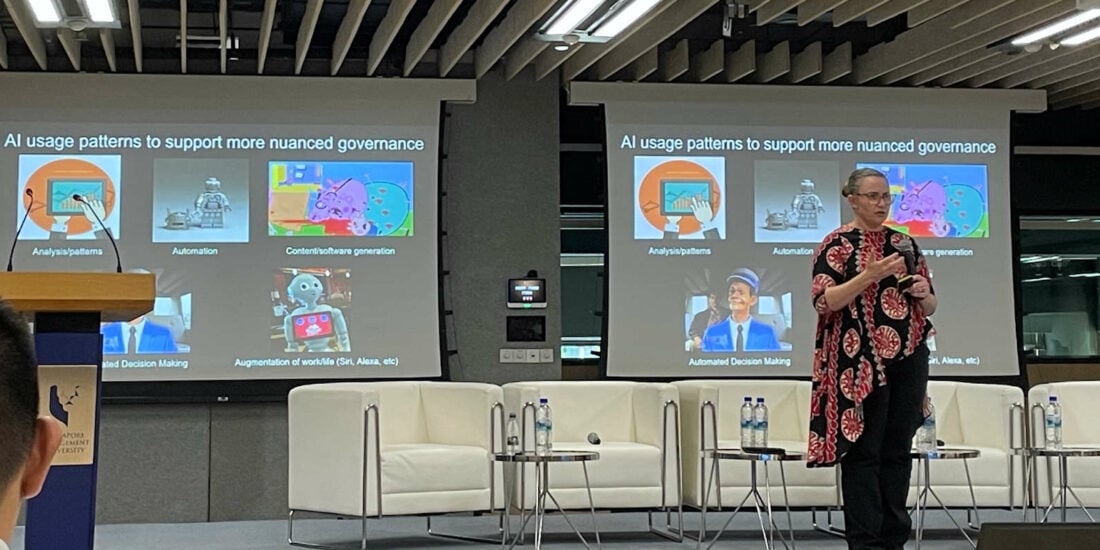
What is Your Artificial Intelligence Quotient?
A report released in May 2018 by the Law Society of England and Wales, titled “Artificial Intelligence and the Legal Profession” (AI Report),1 The AI Report can be downloaded from <http://www.lawsociety.org.uk/news/stories/artificial-intelligence-and-the-legal-profession-horizon-scanning-report/> (accessed 24 September 2018). highlights the growing influence of AI in the legal profession. AI applications are increasingly used in many legal contexts, including litigation and transactional work. Be it automated contract review technology, chatbots or predictive tools, AI can no longer be ignored by lawyers and law practices.
But what is AI, really? How can lawyers increase their AI Quotient (AIQ) to guide them in making informed decisions on, for example, whether to buy an AI-powered legal solution? This article outlines some important AI concepts that lawyers must know to begin raising their AIQ.
AI as Algorithm
A common conception of AI is that of a robot or a supercomputer performing human tasks. A recent book by two data science professors, AIQ: How Artificial Intelligence Works and How We Can Harness Its Power For A Better World,2 Nick Polson and James Scott, AIQ: How Artificial Intelligence Works and How We Can Harness Its Power For A Better World (Great Britain: Bantam Press, 2018). provides a different perspective.
The authors of AIQ suggest that we should think of AI instead as an algorithm, which is “a set of step-by-step instructions so explicit that even something as literal-minded as a computer can follow them”.3AIQ, id, at p 3. AI involves a “pipeline” of connected algorithms to replicate human intelligence.4AIQ, supra n 2, at p 4. In practical terms, “[t]he pipeline takes in data from some specific domain, performs a chain of calculations, and outputs a prediction or a decision”.5AIQ, id.
Although the categories of AI algorithms are complex and are not examined in this brief overview, the increasing power of AI algorithms is evidenced by their ability to beat humans and computers in traditional games such as chess and Go (see the introduction to our August 2018 article titled “Disruptive Legal Technologies – Is Ethics Catching Up?”). More recently, it was reported in June 2018 that teams of AI algorithms have beaten human players in a complex computer strategy game known as Dota 2.6 Will Knight, “A team of AI algorithms just crushed humans in a complex computer game” MIT Technology Review (25 June 2018) <https://www.technologyreview.com/s/611536/a-team-of-ai-algorithms-just-crushed-expert-humans-in-a-complex-computer-game/> (accessed 24 September 2018).
As more and more AI-powered legal solutions appear on the market, lawyers should at least understand what the AI algorithm used by the legal solution seeks to achieve.
Training the AI System
This leads us to the next question: assuming that the AI algorithm has been defined, how does it help lawyers predict outcomes or make decisions? The AI Report observes that “an AI system is provided with a ‘training set’ of data about the subject and its algorithms then identify relationships within the data”.7AI Report, supra n 1, at p 3.
Typically, two ways to “train” AI algorithms are known as “supervised learning” and “unsupervised learning”. Supervised learning involves using labelled input data to predict future events. For example, algorithms can use historical data on patients’ blood samples and whether patients developed cancer subsequently to predict cancer risk for future patients.8 Field Cady, The Data Science Handbook (Hoboken, NJ: John Wiley & Sons, Inc., 2017), at p 89 (“Data Science Handbook”).
On the other hand, unsupervised learning involves an algorithm identifying new patterns based on raw unlabelled data.9Data Science Handbook, id. One application of unsupervised learning is an online recommender system which uses an algorithm to predict your future purchasing preferences based on your previous purchasing history and the customer segment that you are most likely associated with.10 John Paul Mueller and Luca Massaron, Artificial Intelligence for Dummies (Hoboken, NJ: John Wiley & Sons, Inc., 2018), at p 134 (“Artificial Intelligence for Dummies”).
Lawyers can consider whether they prefer an AI solution that uses defined data to predict or decide a specific outcome, or one that uses a broad-based approach to develop its own insights into the data set.
Probabilities Vs Certainties
A fundamental feature of AI algorithms is that they “typically deal with probabilities rather than certainties”.11AIQ, supra n 2, at p 4. The authors of AIQ give the example of an AI algorithm assessing that a credit card transaction is 92% likely to be fraudulent, as opposed to 100%.12AIQ, id.
AI algorithms therefore quantify uncertainty,13 Stuart Russell and Peter Norvig, Artificial Intelligence: A Modern Approach (Upper Saddle River: Pearson, Third Edition, 2016), at pp 480-82 (“Artificial Intelligence: A Modern Approach”). by expressing probability in terms of the “likelihood of an event” in numerical terms.14Artificial Intelligence for Dummies, supra n 10, at p 141. This is not surprising because the reasoning behind a certain diagnosis is usually based on a state of knowledge.15Artificial Intelligence: A Modern Approach, supra n 13, at p 482. Legal reasoning is no less uncertain, as it relies heavily on professional judgment.16Artificial Intelligence: A Modern Approach, id, at p 481. Poor data quality and human “cognitive biases” further increase the risk of uncertainty in AI algorithms.17Artificial Intelligence for Dummies, supra n 10, at p 141.
As such, lawyers should understand that AI solutions may rarely guarantee 100% certainty in making predictions or decisions.
Conclusion
The rise of AI usage in the legal profession calls for lawyers to improve their AIQ in assessing AI-powered legal solutions. While lawyers are not expected to be AI scientists, they should be familiar with basic AI concepts such as algorithm, “training” data and probability. In this regard, lawyers should ask three questions:
- What does the AI algorithm seek to achieve?
- Is the AI algorithm “trained” on labelled or raw data?
- What is the probability of the prediction or decision the AI algorithm makes?
Endnotes
| ↑1 | The AI Report can be downloaded from <http://www.lawsociety.org.uk/news/stories/artificial-intelligence-and-the-legal-profession-horizon-scanning-report/> (accessed 24 September 2018). |
|---|---|
| ↑2 | Nick Polson and James Scott, AIQ: How Artificial Intelligence Works and How We Can Harness Its Power For A Better World (Great Britain: Bantam Press, 2018). |
| ↑3 | AIQ, id, at p 3. |
| ↑4 | AIQ, supra n 2, at p 4. |
| ↑5 | AIQ, id. |
| ↑6 | Will Knight, “A team of AI algorithms just crushed humans in a complex computer game” MIT Technology Review (25 June 2018) <https://www.technologyreview.com/s/611536/a-team-of-ai-algorithms-just-crushed-expert-humans-in-a-complex-computer-game/> (accessed 24 September 2018). |
| ↑7 | AI Report, supra n 1, at p 3. |
| ↑8 | Field Cady, The Data Science Handbook (Hoboken, NJ: John Wiley & Sons, Inc., 2017), at p 89 (“Data Science Handbook”). |
| ↑9 | Data Science Handbook, id. |
| ↑10 | John Paul Mueller and Luca Massaron, Artificial Intelligence for Dummies (Hoboken, NJ: John Wiley & Sons, Inc., 2018), at p 134 (“Artificial Intelligence for Dummies”). |
| ↑11 | AIQ, supra n 2, at p 4. |
| ↑12 | AIQ, id. |
| ↑13 | Stuart Russell and Peter Norvig, Artificial Intelligence: A Modern Approach (Upper Saddle River: Pearson, Third Edition, 2016), at pp 480-82 (“Artificial Intelligence: A Modern Approach”). |
| ↑14 | Artificial Intelligence for Dummies, supra n 10, at p 141. |
| ↑15 | Artificial Intelligence: A Modern Approach, supra n 13, at p 482. |
| ↑16 | Artificial Intelligence: A Modern Approach, id, at p 481. |
| ↑17 | Artificial Intelligence for Dummies, supra n 10, at p 141. |






